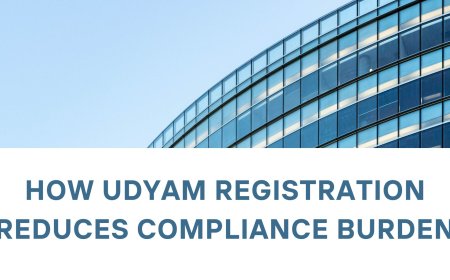The Role of Alternate Dispute Resolution in Corporate Conflicts
Learn how Alternate Dispute Resolution (ADR) helps resolve corporate conflicts efficiently. Explore its benefits for businesses seeking quicker, cost-effective solutions.

In todays fast-paced corporate world, conflicts are inevitable. Businesses, irrespective of their scale and reach, encounter disputes arising from contracts, partnerships, acquisitions, employment, and other business dealings. While traditional litigation remains a valid route for resolving such disputes, Alternate Dispute Resolution (ADR) has emerged as a more efficient and cost-effective mechanism. ADR techniques, including mediation, arbitration, and conciliation, help companies avoid lengthy legal battles while preserving business relationships.
With globalization pushing multinational corporations into diverse jurisdictions, ADR plays an increasingly critical role in resolving conflicts in a manner that aligns with corporate interests. The Neeti Niyaman legal framework and international best practices emphasise ADR's benefits in expediting conflict resolution without compromising fairness.
Understanding Alternate Dispute Resolution in Corporate Law
1. The Meaning of Alternate Dispute Resolution (ADR)
ADR encompasses a range of dispute resolution techniques that provide an alternative to traditional litigation. These methods are designed to be faster, more flexible, and less adversarial than court proceedings. In the corporate world, where time is money, ADR mechanisms have become a necessity rather than an option.
2. Why ADR Over Traditional Litigation?
Corporations often prefer ADR over litigation for several reasons:
-
Speed: Court cases can drag on for years, whereas ADR mechanisms resolve disputes in a fraction of the time.
-
Confidentiality: Unlike court proceedings, which are public records, ADR keeps sensitive business information private.
-
Cost-Efficiency: Legal battles involve significant expenses, including attorney fees and court charges. ADR significantly reduces these costs.
-
Flexibility: ADR allows parties to customize dispute resolution processes instead of adhering to rigid courtroom procedures.
-
Preservation of Business Relationships: Unlike litigation, which often leads to a win-lose situation, ADR promotes amicable settlements, ensuring business continuity.
In high-stakes cases like the Jet Airways case study, ADR proved instrumental in facilitating negotiations between stakeholders, and minimizing disruptions to business operations.
Types of ADR Mechanisms in Corporate Conflicts
1. Mediation: A Negotiated Settlement
Mediation is a voluntary process where a neutral third party (mediator) assists disputing parties in reaching a mutually acceptable resolution. The mediator does not impose a decision but facilitates productive dialogue between the parties.
Advantages of Mediation:
-
Provides a non-adversarial environment.
-
Encourages creative problem-solving.
-
Helps maintain professional relationships.
Many corporations integrate mediation clauses in their contracts to resolve disputes swiftly. The Neeti Niyaman legal framework strongly advocates mediation in corporate and commercial disputes.
2. Arbitration: A Legally Binding Resolution
Arbitration is a formal process where an arbitrator (or panel) hears evidence and renders a binding decision. Unlike mediation, arbitration results in an enforceable award, much like a court judgment.
Key Features of Arbitration:
-
Can be ad-hoc or institutional (e.g., conducted by ICC or LCIA).
-
Parties choose the arbitrator(s), making it more specialized than traditional courts.
-
Enforceability under international treaties (e.g., New York Convention 1958).
Corporate disputes often involve multinational companies, making arbitration a preferred mechanism due to its global recognition. The Jet Airways case study illustrates how arbitration helped creditors and investors navigate complex financial disagreements.
3. Conciliation: Similar to Mediation, But With More Involvement
Conciliation is akin to mediation but with a more active role played by the conciliator, who suggests potential solutions rather than merely facilitating discussions. Many business conflicts in India follow the Neeti Niyaman framework, which promotes conciliation as an effective ADR tool.
The Growing Importance of ADR in Corporate Conflicts
1. Reducing Legal Uncertainties
Corporate entities operate in an environment where time-sensitive decisions are crucial. Litigation often leads to prolonged uncertainty, negatively impacting stock prices, investor confidence, and operational continuity. ADR, especially arbitration and mediation, ensures timely resolutions, allowing businesses to focus on growth rather than legal entanglements.
2. Maintaining Business Reputation
A public legal battle can damage a companys reputation, affecting market trust and customer perception. Many multinational corporations prefer ADR to settle disputes discreetly. The Jet Airways case study is an example of how alternative mechanisms helped avoid prolonged legal proceedings that could have further damaged the airlines image.
3. International Trade and Cross-Border Conflicts
With global commerce expanding, businesses frequently encounter cross-border disputes involving diverse legal systems. Arbitration has gained prominence as it provides a uniform mechanism recognized internationally.
4. Regulatory Endorsements and Legal Mandates
Many jurisdictions, including India, have made ADR mandatory in specific corporate matters. The Neeti Niyaman legal framework has introduced structured mediation and arbitration guidelines, urging companies to resolve disputes outside the courtroom.
Case Study: Jet Airways and the Role of ADR in Its Resolution
One of the most prominent corporate cases showcasing ADRs effectiveness is the Jet Airways insolvency case. Once a leading airline in India, Jet Airways faced financial difficulties, leading to insolvency proceedings. The case saw a multitude of stakeholders, including lenders, investors, and employees, negotiating terms for financial restructuring.
Key Takeaways from the Jet Airways Case Study:
-
Mediation and Negotiation Played a Crucial Role: The resolution plan required extensive mediation to ensure all creditors and shareholders agreed on a common strategy.
-
Arbitration Helped Avoid Further Litigation: Several contract disputes were settled through arbitration, allowing the airline to streamline its restructuring process.
-
Averting a Hostile Legal Battle: Instead of prolonged court battles, ADR mechanisms facilitated discussions that led to an agreement beneficial to all parties.
This case underscores how ADR can be a lifeline for financially distressed corporations, ensuring smooth negotiations and strategic settlements.
Conclusion: The Future of ADR in Corporate Disputes
The role of Alternate Dispute Resolution in corporate conflicts is only set to grow. With businesses facing increasing regulatory complexities, litigation delays, and reputational risks, ADR provides an efficient, cost-effective, and business-friendly alternative to traditional legal battles.
The Neeti Niyaman framework and global arbitration institutions are continuously improving ADR mechanisms to align with evolving business needs. Case studies like Jet Airways reinforce ADRs credibility, proving that corporations can navigate disputes effectively without jeopardizing their operations or goodwill.
With courts worldwide promoting ADR as a preferred dispute resolution method, businesses should proactively incorporate mediation, arbitration, and conciliation clauses in their contracts. By doing so, they not only minimize legal risks but also foster a more cooperative corporate ecosystem, ensuring sustainable business growth.







































